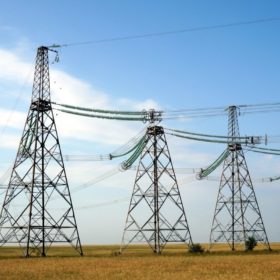
The Australian network regulator has ignored pleas from some of the biggest solar and wind project owners in Australia to change the way marginal loss factors (MLFs) are calculated. While it has acknowledged that transmission has failed to keep pace with renewable energy investment, it did not offer any suggestions on what should be done to ameliorate the problem.
The Australian Energy Market Commission (AEMC) has rejected a request to change how transmission losses are calculated. much to the disappointment of large-scale renewable energy investors. Coupled with connection delays and extra firming required by regulators, worsening transmission losses – known as marginal loss factors (MLFs) – have been a major hurdle for wind and solar developers in Australia.
The consultations on changes to MLFs were opened in June 2019 on the request of Adani Renewables, which proposed the allocation of intraregional settlement residues (IRSRs). Other big investors later backed the Indian developer’s proposal to move to average loss factors (ALFs), arguing that the new system would simplify the way transmission losses are calculated and increase certainty by averaging out losses instead of applying them based on the circumstances of individual generators.
The AEMC rejected the proposal on Thursday. It justified its decision as a way to protect consumers from bearing the cost of electricity losses. This came as no surprise, given the AEMC’s draft determination in November, which described ALFs as a wealth transfer from customers to generators, and said that it dampened signals to build assets in good locations. “Consumers shouldn’t have the cost of individual business decisions simply transferred to them,” AEMC Chairman John Pierce said.
What is not mentioned, however, is that the businesses are solely responsible for building the new generation, which is reducing the nation’s supply shortfall and driving down wholesale prices. In return, they expect fair market conditions without the risk of MLFs hurting their revenues by 10% to 20%, which may come as a result of the decisions of other generators to join the same part of the grid.
No options
But the AEMC said on Thursday that there is no need to create new rules to help accommodate the influx of renewable generation in the grid. The network regulator said that it agreed that volatility and uncertainty are affecting the investment environment, but it disagreed on the reason. It said that worsening MLFs are just a symptom of the rapid energy transition of the National Electricity Market (NEM).
“The rapid pace of renewable investment has meant that generation has got ahead of transmission,” Pierce said. “Changing to ALFs could increase total losses, which means more electricity needs to be generated to meet consumer demand. It could also increase wholesale energy prices and overall make the operation of the NEM less efficient.”
A group of 25 leading renewable energy investors known as the Clean Energy Investment Group –representing investments of more than 6.5 GW of installed capacity and a development pipeline in excess of 10 GW, including names such as John Laing, Total Eren, Innogy, BlackRock and Neoen – said the AEMC decision was disappointing, but not surprising.
“Sadly, the AEMC blame the volatility of the MLF on the transformation currently underway from thermal to renewable energy,” the group said in a post on LinkedIn. “The decision seems to be all about maintaining the status quo to slow or stop the transformation rather than embracing the transformation and doing everything in their power to ensure it is achieved at the lowest cost to consumers.”
‘Deeply problematic’
According to the Clean Energy Council (CEC), the AEMC decision to retain the existing MLF regime, which is “no longer fit-for-purpose,” will further undermine investor confidence in new clean energy generation. In the past year, the lack of investor confidence has already seen new investment in large-scale renewables collapse by more than 50%, according to data from both the CEC and BloombergNEF.
CEC Chief Executive Kane Thornton said the decision to retain the existing regime did not reflect the needs of the current Australian energy industry.
“While industry welcomes debate and analysis of alternative reforms, simply retaining the current regime is deeply problematic and undermines the energy transition underway in Australia,” Thornton said. “We had expected that the AEMC would consider how losses could be shared by generators in a way that presents less volatility and more manageable risk, without increasing consumer costs or ignoring transmission losses.”
According to Thornton, the AEMC has missed an opportunity to think openly and creatively about reforming the currently flawed MLF framework. He said it undertook very little of its own analysis regarding the possible options, to the disappointment of the entire industry.
Lắp đặt điện mặt trời Khải Minh Tech
https://ift.tt/2X7bF6x
0906633505
info.khaiminhtech@gmail.com
80/39 Trần Quang Diệu, Phường 14, Quận 3
Lắp đặt điện mặt trời Khải Minh Tech
https://ift.tt/2ZH4TRU
Không có nhận xét nào:
Đăng nhận xét